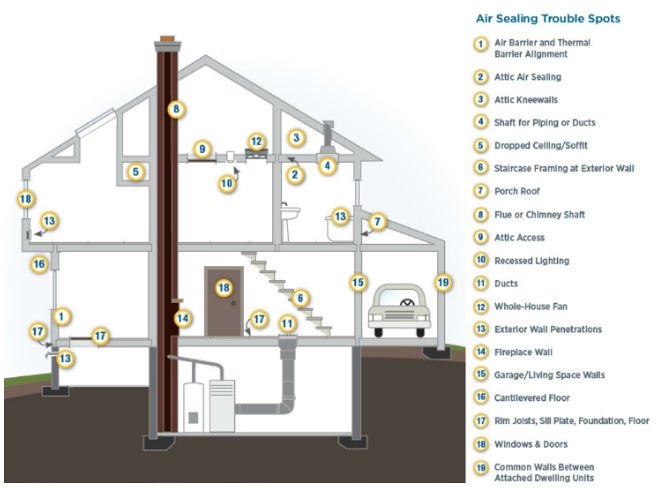Franklin Energy’s Product Division, AM Conservation, Agrees to Acquire Energy Federation, Inc.
Air Sealing: Transforming Homes to Energy Efficiency
 Energy Federation Incorporation
Energy Federation Incorporation
Air Sealing is on higher demand than ever before. Nowadays, the consumer’s top priority is energy efficiency and they are looking for ways to improve their home. Home Energy Assessments are the best way for a homeowner to understand how their energy is being consumed but they have little to no knowledge on the effects of airs sealing.
So what’s a homeowner to do? Some common methods of achieving this is caulking or weather stripping. EFI provides the best product at a reasonable price for these items because we find it essential to equip our contractors with the best of the best.

Educate the Homeowner
Believe it or not, if a home is leaking air - even the tiniest amount – it can affect the energy use and can cause an increase on a utility bills. If too much unwanted air enters the home during colder/windier days (also known as air leakage), the home will be constantly battling the temperatures and turning up the heat to make up the difference. During warmer days, not enough air may enter and it can have an effect on the air quality in a home, not to mention raising the inside temperature and battling the air conditioner.

Caulk vs. Weather Stripping: Do Homeowners Know the Difference?
Caulk is typically used for cracks found around door and window frames. Weather stripping is mostly used for moving parts such as doors or functioning windows. They’re different in their use but they have one thing in common – they plug up air leaks and save money and energy!
Here are a few homeowner tips we should distribute:
- Keep your fireplace flue damper closed when not in use
- Use fire-resistant materials such as sheet metal or sheetrock and furnace cement caulk to properly seal any leaks around fireplace chimneys, furnaces, and gas-fired water heater vents
- Install foam gaskets behind all outlets and switch plates
- Caulk and weather strip all doors and windows
- For larger gaps around windows and baseboards (in addition to any other spots that will cause leaks), use foam sealant
- Anyplace where plumbing, ducting or electrical wiring comes through your walls, floors, or ceilings should be checked for leaks and caulked

For more info and the full list of Tips for Sealing Air Leaks, visit: Energy.gov
Subscribe
Resources
Latest Updates
Customer Testimonials
Lets Talk!
Reach your customers & Exceed your goals
Contact EFI